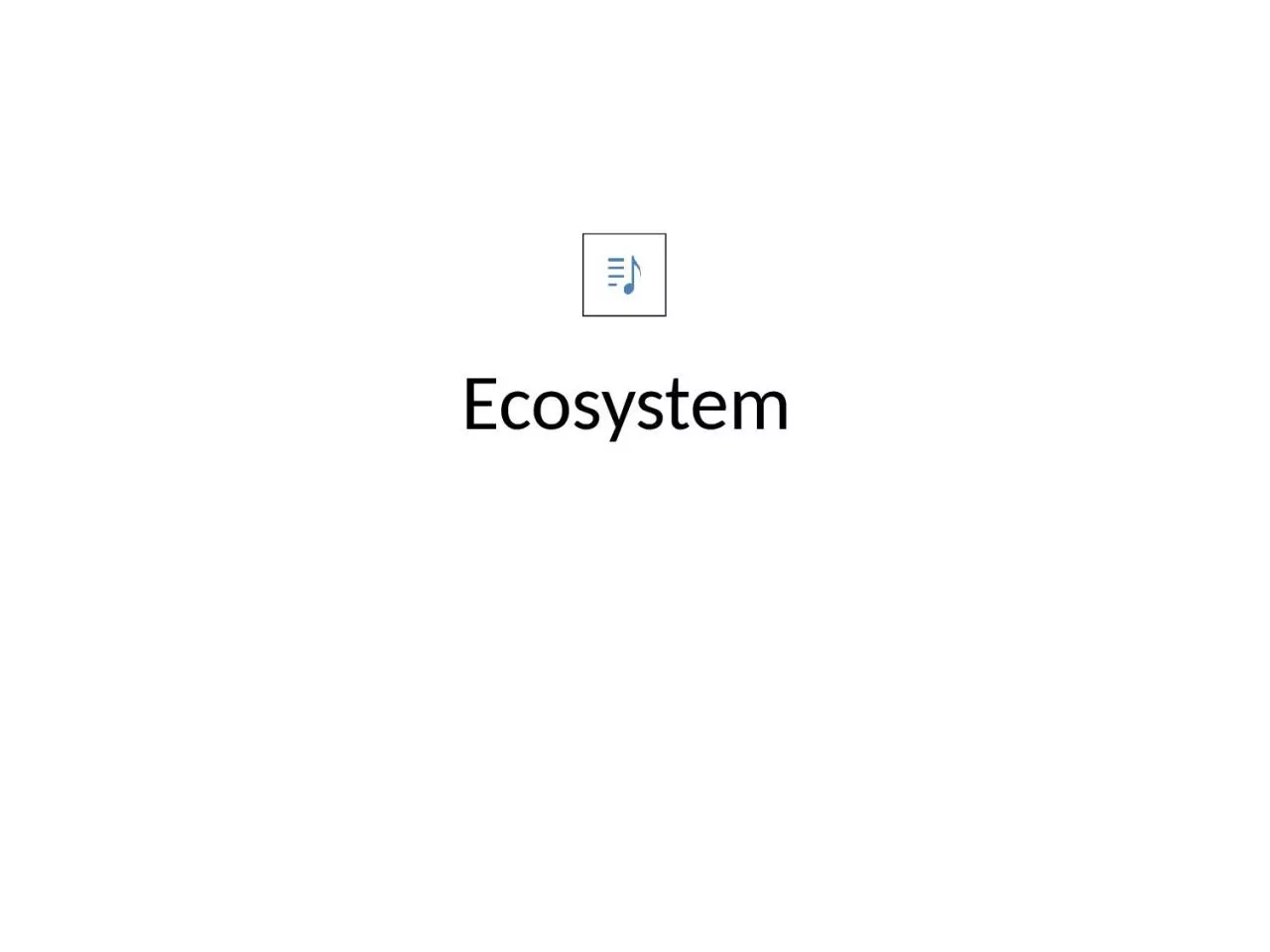

Ecosystem is defined as the system resulting from the integration of all living and nonliving factors of the environment The word ecosystem is not the synonyms of habitat community or some other similar description terms Rather it is a technical term in ecology and refer to a system of living a ID: 1026876
Download Presentation The PPT/PDF document "Ecosystem Concept of an ecosystem" is the property of its rightful owner. Permission is granted to download and print the materials on this web site for personal, non-commercial use only, and to display it on your personal computer provided you do not modify the materials and that you retain all copyright notices contained in the materials. By downloading content from our website, you accept the terms of this agreement.
1. Ecosystem
2. Concept of an ecosystem Ecosystem is defined as the system resulting from the integration of all living and nonliving factors of the environment.The word ecosystem is not the synonyms of habitat, community or some other similar description terms. Rather it is a technical term in ecology and refer to a system of living and non living components interacting as a whole. An ecosystem comprises two components. These are the living parts called biotic components and the nonliving parts called abiotic component.
3. Components of ecosystem
4. Producers: are green plants that manufacture carbohydrate by photosynthesis. Consumers: The animals that consume directly or indirectly the energy of food found in green plants are called consumers. Decomposers: They are microorganism like fungi and some bacteria which are incapable of manufacturing their food and live on dead and decaying plants and animals. Producers are autotrophs while consumers are hetrotrophs.
5. Temperature: it influences all forms of life through increasing or decreasing the vital activities of organisms, like behavior, metabolism, reproduction, development and death.Water: water is called liquid of life, it is the principal constituent of the protoplasm.Light: ecologically, the quality, quantity intensity and duration of light are quite important. It is essential for photosynthetic organisms for the preparation of food.
6. Humidity: moisture content of the atmosphere is also an important factor. It directly regulates the rate at which water evaporates from the body surface of organisms by transpiration. Wind: Blowing air affects the plants particularly their rate of transpiration. In high wind velocity, only the plants with strong root and tough stem and leaves can survive. Soil pH: it determines acidity or alkalinity of the soil which makes the soil habitable to the plants and other organisms. Most organisms thrive in an optimal pH (6.5 -7.5).
7. Mineral elements: availability and concentration of essential mineral elements control the distribution of microbes, plants and animals. Topography: surface configuration of an area is called topography. Indirectly, it affects other factors like wind, water current, light….etc.
8. Food chains: The transfer of food energy from the source in plants through a series of organisms with repeating eating and being eaten is referred to as food chain.Food webs: In nature, the food relationship can not be explained only in terms of a single food chain, as the same organism may derive food from more than one trophic level and even the same organism may be eaten by several organisms of a higher trophic level. Thus food chains are not isolated linear chains of trophic levels, rather a network of food chains is found and these interconnected food chain from a structure called food web.
9. Ecological pyramids: basically, three types of pyramids are recognized:Pyramids of number.Pyramids of biomass.Pyramids of energy.Pyramids of energy:Food energy passes from one trophic to another trophic level, and in each transfer much of its energy is lost as heat, and as such each trophic level receives less energy as compared to the previous trophic level. The energy level gradually tapers in the food chain forming a pyramid like structure.
10. Pyramids of Energy in a food chain
11.